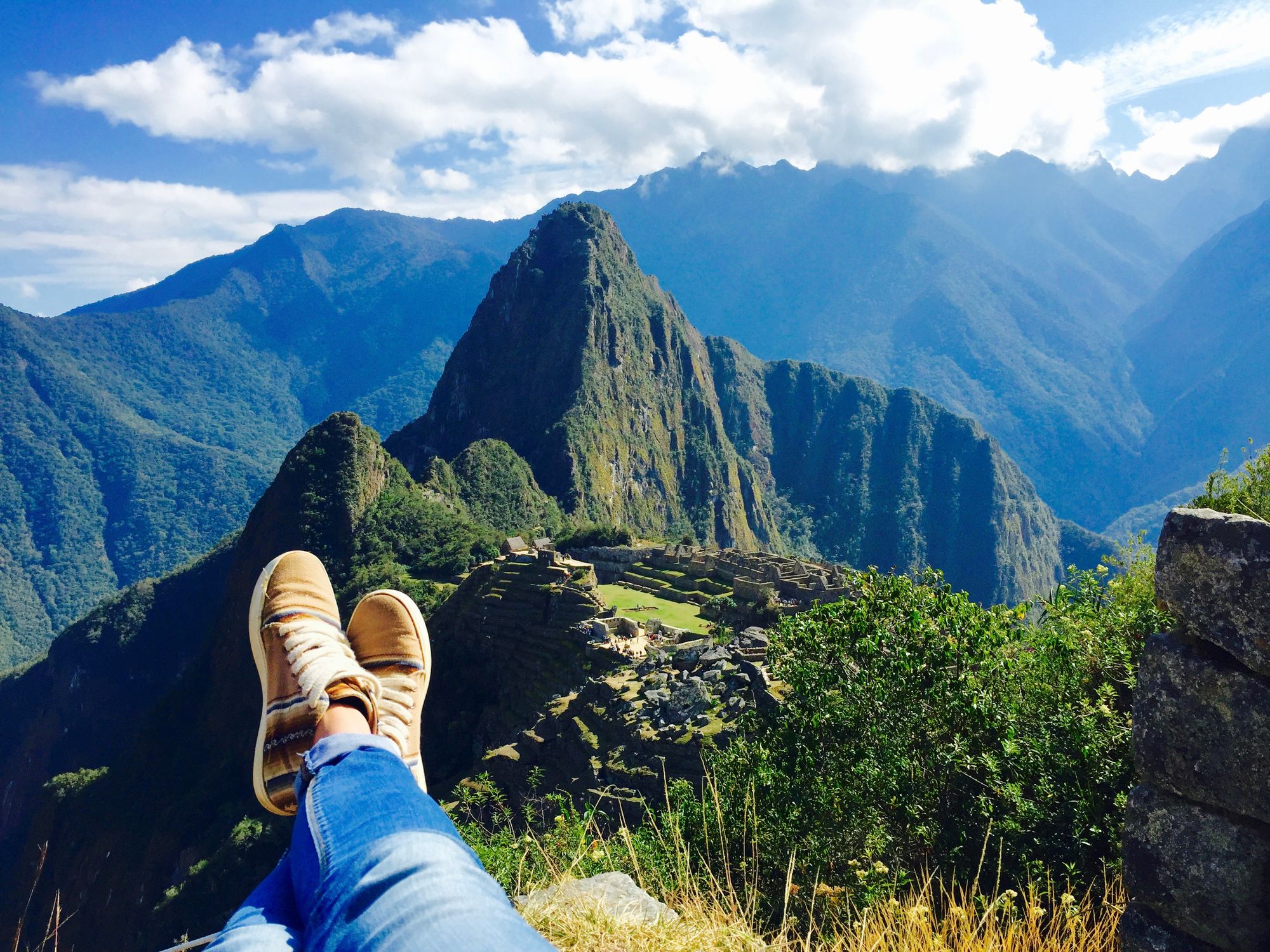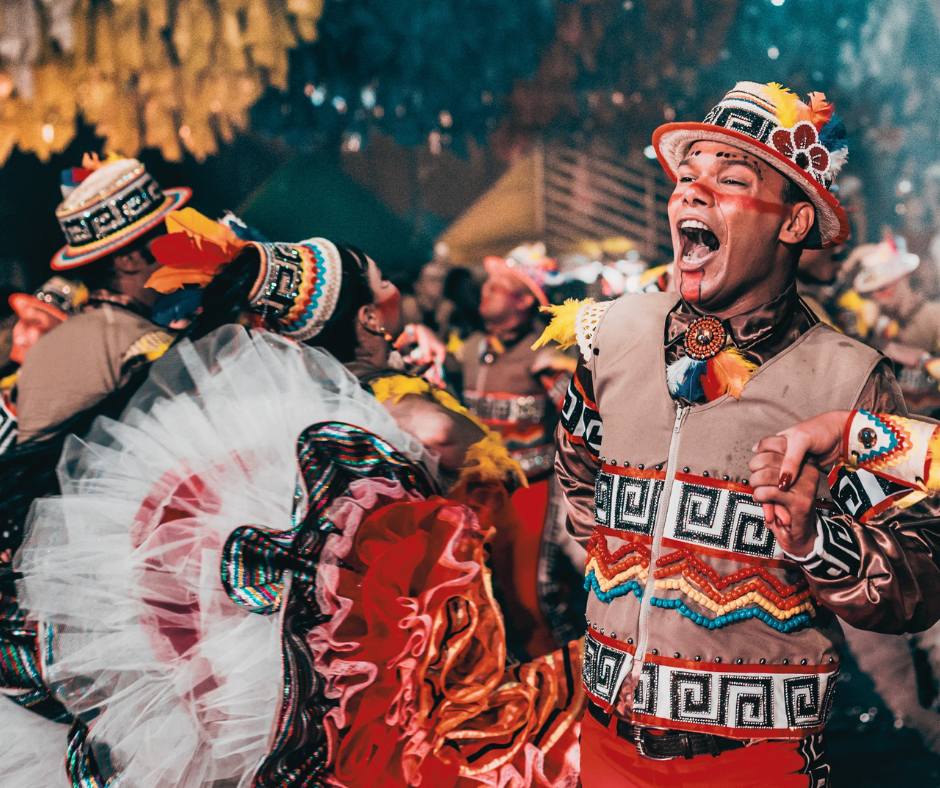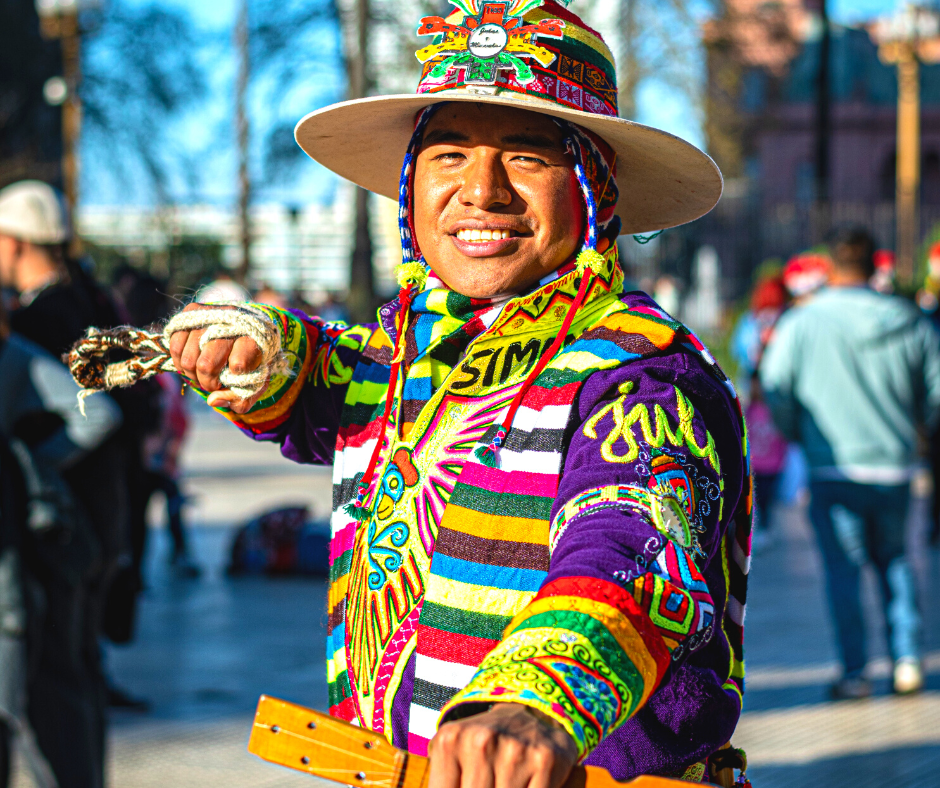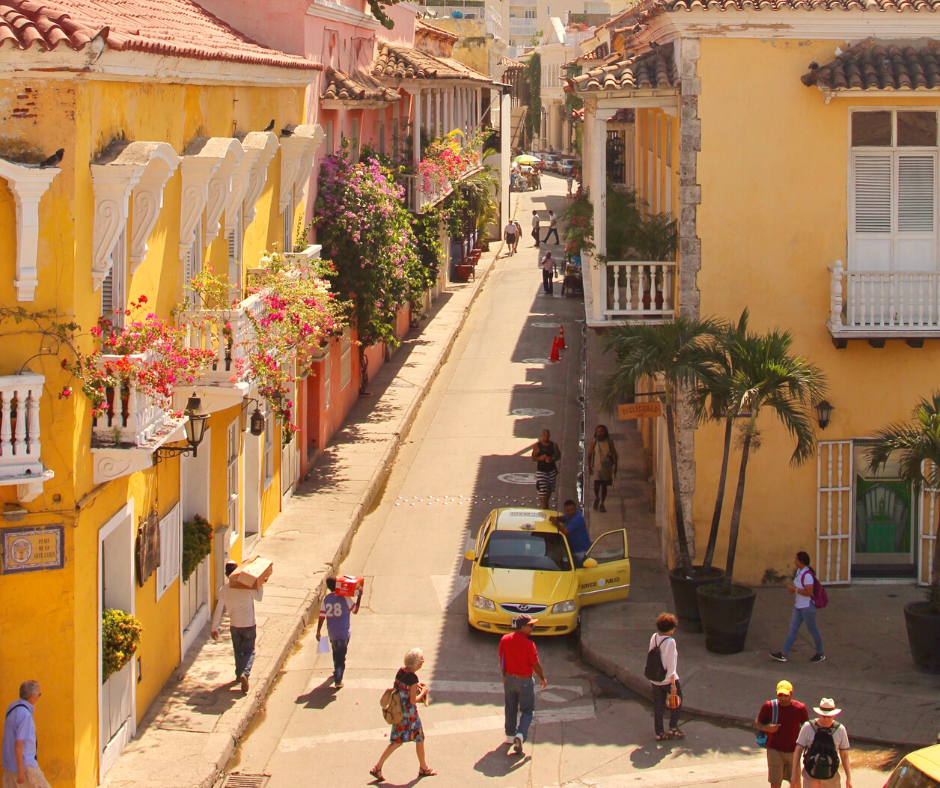Bolivia is not only home to the world's largest salt deposit but also to pink dolphins. The landlocked country has the highest capital in the world, with 3,500 meters above sea level, and La Paz counts a population of more than 1 million people. Being used to extreme altitude, there is no surprise that the Bolivian football team is never out of breath.
The digital nomad community in Bolivia is generally small. However, we found some great spots to work from.
🌱 Travel health insurance for Bolivia
💡
Genki Traveler is a travel health insurance with worldwide cover. Monthly payment plans, and easy signup in less than 1 minute.
The table of content will be generated here
🇧🇴 Entry requirements for Bolivia
- Visa: Most passport holders of European countries, the UK, Canada, Australia, New Zealand, Japan, and South America don't need a visa for staying in Bolivia for up to 30 days. Citizens from the United States have to apply for a visa and get a maximum stay of 90 days granted with it.
- Required documents: All passengers to Bolivia are required to present one of the following: 1) proof of vaccination (completed at least 14 days prior to travel), 2) a negative RT-PCR test was taken within 72 hours prior to departure, or 3) a negative antigen test, taken no more than 48 hours before departure.
✈️ How to get to Bolivia
- Plane: Main international airports in Bolivia are Santa Cruz Airport (VVI), La Paz Airport (LPB), and Cochabamba Airport (CBB). Portugal is the only European non-stop destination from Santa Cruz Airport. Other direct flights connect Bolivia to other Latin American countries and Cuba.
- La Paz: The airport in La Paz is 20 km from the city center. The best way to get to the city is the taxi which is around 80 BOB (12 Euro). Have in mind that La Paz is 4,061 meters above sea level. Take measures to avoid altitude sickness.
- Santa Cruz de la Sierra: After arrival at Santa Cruz Airport, take bus 135 to the city of Santa Cruz de la Sierra. The bus runs every 10 minutes and a single ticket costs 0.90 Euro.
- Cochabamba: The airport in Cochabamba is 3 km from the city center. The best way to get to town is the taxi which is around 35 BOB (5.20 Euro).
🏡 How to find a place
- Airbnb: The site offers plenty of houses, flats, and apartments with prices ranging between 500 and 2,000 Euro a month. Make sure to check pictures and quality beforehand as photos and reality might differ.
- Vrbo: Similar to Airbnb, Vrbo is listing flexibly furnished and unfurnished apartments and houses throughout Bolivia in almost every price range.
🚌 Public transport
- Taxi: Taking a taxi is probably the safest and recommended way to get around in Bolivian cities. There are two types of taxis. The regular taxis pick up passengers on the streets and fares start at 0.60 Euro per person, these taxis are shared taxis. Radio taxis pick you up from an agreed location at an agreed time. The service is a bit more expensive, and trips cost around 5 Euro per person.
- Uber: The Uber base rate is 4 BOB (0.60 Euro). Uber is a safe and quick way to get around town.
- Cable Car: An urban cable car, the Mi Teleférico connects La Paz with neighboring El Alto. The system consists of 10 lines and a single journey costs 3 BOB (0.45 Euro).
- Bus: There are 2 types of buses, the Micros and the Trufis. Micros follow a fixed itinerary. You can hail them from the street, and they stop along the route whenever passengers request a stop. Trufis are neither buses nor taxis. A sign on their windshield tells the destination without following any timetable. The fare is 2 BOB (0.30 Euro) per ride.
🏘 Where to stay in La Paz
- Casco Viejo: The historic center of La Paz is the best neighborhood for sightseeing. A central location is a good option when your time in La Paz is short. Casco Viejo is walkable and comes with small alleys, historical buildings, and great museums. Furnished apartments are around 500 to 650 Euro a month.
- Miraflores: Located in the east of the city center, Miraflores is really well located with easy access to the main attractions. The area comes with a beautiful city view too. You are close to the botanical garden, parks, monuments, and shops. Renting a furnished 1-bedroom apartment in this neighborhood costs around 600 Euro.
- Sopocachi: The bohemian area of Sopocachi is one of the oldest neighborhoods of La Paz and attracts mainly students and young families. The area is a mishmash of colonial mansions and modern apartment blocks. You find bars, restaurants, nightclubs, and theaters at close distance. Renting an apartment ranges between 550 to 750 Euro a month.
🧑🏻💻 Where to work from in La Paz
Coworking spaces
- EQ Spaces Cowork: The coworking space is very centrally located with bars, restaurants, and event venues around. The space has a gorgeous city view, ergonomic furniture, and snacks and drinks for sale. Monthly membership costs 215 Euro.
Coffee shops
- The Writers Coffee: The café is located at Calle Comercio and serves coffee specialties and sweets. The wifi is decent and the tables and lounge chairs are comfortable for a work session.
- Café del Mundo: The Swedish owner created Café del Mundo as a stylish and cozy nook within the busy city life of La Paz. The tables are good for work sessions and if you get tired you might want to slough into one of the day beds. The food menu holds healthy meals from many different corners of the world.
🏘 Where to stay in Santa Cruz de la Sierra
- Santa Cruz Center: The city center, also known as Distrito 11, is a good choice if you are interested in sights, parks, and commercial areas. Important buildings like Metropolitan Cathedral, Casa de Cultura Raul Otero Reiche, or Museo de Arte Sacro are located in this district. The Parque El Arenal is a good green recreation spot, perfect for a picnic or an afternoon walk. In general, the center of Santa Cruz is very pedestrian friendly. Prices for apartments vary between 500 to 1,000 Euro a month.
- Equipetrol: District 1 is the financial hub of Santa Cruz, and one of the more popular residential areas. You are very close to the Zoological Park and the Centro Comercial Ventura Mall, the biggest shopping mall in Bolivia. Prices for a furnished 1-bedroom apartment are between 500 to 800 Euro a month.
🧑🏻💻 Where to work from in Santa Cruz de la Sierra
Coworking spaces
- Central43: The coworking space is not only common ground for like-minded people, but it is also a place where sustainability meets creativity. The venue is 85 % powered by solar panels. Ergonomic chairs and desks are provided too. The monthly membership starts at 255 Euro.
Coffee shops
- Typica Santa Cruz: Café Typica is a small, alternative café roastery with locations in La Paz, Sucre, and Santa Cruz. The atmosphere is very cozy and besides making really good coffee specialties, they also have a tasty food menu.
🚊 How to travel around
- Bus: There are a few bus companies that operate on long-distance routes. Bigger cities have bus terminals and an information and ticket office. Have in mind to bring warm clothes and a blanket when traveling to the highlands or overnight.
- Plane: Taking the plane is probably the best way compared to costs, time, and comfort. The state-owned Boliviana de Aviación carrier is connecting almost every corner of the country for reasonable prices between mostly 50 and 100 Euro.
🎖Must see
- Mi Teleférico: When visiting La Paz, explore the routes of the world's highest and longest cable car transportation system. Riding in one of the cabins offers an unbeatable view for only 3 BOB (0.45 Euro) per ride.
- The Witches Market: The Witches Market in La Paz, also known as Mercado de las Brujas, is located on Calle Jiminez, a lively tourist area. The unusual market shows the fascinating inside of the ingenious beliefs of the Bolivians and the techniques and requisites of brujas (witches) and Kallawayas (medicine men).
- Amboro National Park: Amboro National Park is for everyone who loves wildlife, tropical jungle, and mountain valleys. It is a must-see when visiting Santa Cruz de la Sierra. The park is located 40 km west of Santa Cruz. The park is home to more than 800 species of birds and hundreds of species of mammals, amphibians, and reptiles. This is a guided adventure in a vehicle accompanied by a local guide.
- Mercado 16 de Julio: Visit El Alto, the sister city of La Paz, and go treasure hunting at the city’s beautiful flea market. The Bolivian-style market has its origin in the 1960s. The market opens every Thursday and Sunday from 6 am to 6 pm.
💡Good to know
- Internet: The median internet speed for fixed broadband is about 53.98 Mbps download and 12.45 Mbps upload speed.
- Sim card: Operators with good coverage and a reasonable price are Tigo, Entel, or VIVA. You can buy a sim card directly at the airport, in small shops or pharmacies around the city. The regular price for a sim card is 10 BOB (1.50 Euro)
- Sockets: Type A and C.
- Digital nomad community: Bolivia is not yet a digital nomad destination. The most popular cities in Bolivia for digital nomads are La Paz and Sucre but the community is still taking baby steps.
- Cost of living: With an average rent of 700 Euro per month, the monthly cost of living for a single digital nomad can be summed up to 1,100 Euro.
- Currency: The official currency of Bolivia is the Bolivian Boliviano (BOB or Bs). 1 BOB converted in Euro is 0.15 Euro, and 1 Euro is 6,75 BOB.
- Climate: The mean annual temperatures vary between 16 and 20°C. The sunny and dry season is from May to October. The rainy season starts in November and lasts until April.
- Safety: Bolivia does have some dangers, like pickpocketing and theft but these crimes are avoidable by watching your belongings and using common sense.
🚧 What to avoid
- Forget warm clothes: Outside, nighttime temperatures in the Andean highlands dip well below freezing, so be prepared and take some pullovers and warm socks with you. And travel with a hot water bottle.
- Avoid altitude sickness: There are several places and cities, like La Paz which are worth a visit but should be well organized. Due to its altitude, there is the danger of altitude sickness which comes with headache, fatigue, and nausea. During your first one or two days, take it slow and give your body time to get used to the altitude. Read this article on how to avoid altitude sickness for prevention.
- Ignore the zebras: One of the nightmares in Bolivian cities is traffic. Friendly guards, dressed up as zebras, will guide you through the mess. Follow their lead and you will be fine, otherwise expect to be humiliated in public and in front of a local crowd.
🚴🏻♀️ How to stay healthy
Stay active
- Hiking: One of the most iconic rock formations in La Paz is the Muela del Diablo (devil's tooth), which is a great day-trip hiking tour in La Paz. The hike takes about 2 hours uphill and comes with a breathtaking view of the valley. To get there, take a taxi to the Cementerio El Pedregal.
- Guembe Biopark: Located only 15 minutes away from Santa Cruz, Guembe Biopark is a great place to visit on a hot day. Inside the park, you can play volleyball, go kayaking or swimming. The entrance fee is 140 BOB per person.
Health risks
- Water quality: It is not recommended to drink tap water in Bolivia.
- Air quality: The air quality in Bolivia is moderate.
💡
Where to travel next? Destinations close to Bolivia.
Peru for nomads
Peru is the third largest country in Latin America and 2x bigger than Ukraine, the second largest country in Europe. No wonder, that Peru has 3 official languages (Spanish, Quechua, and Aymara) and a rich history dating back thousands of years. It is also a leading culinary destination when it

Brazil for nomads
The wonders of Brazil mesmerize travelers, who come to the country from all around the world to experience the colorful Rio Carnival, climb to the magnificent Christ the Redeemer, indulge in the art and architecture of Sao Paolo, travel deep into the jungle of the Amazonas, or watch one of

Argentina for nomads
The country of Che Guevara and Lionel Messi is not just famous for political resistance, and football, but also for tango, gauchos, and Yerba Mate. Did you know that tango was previously a dance popular only in the working class? In fact, tango was prohibited as it was the dance








